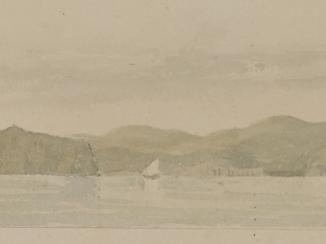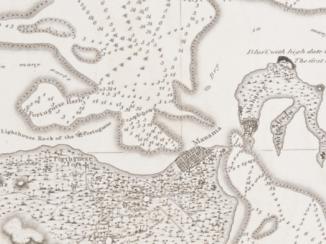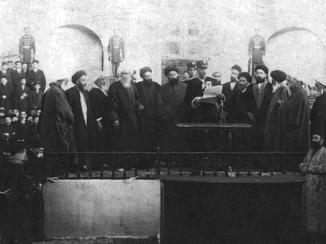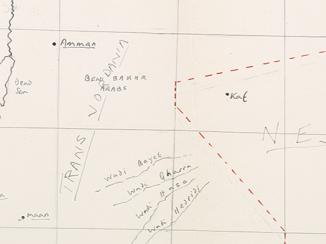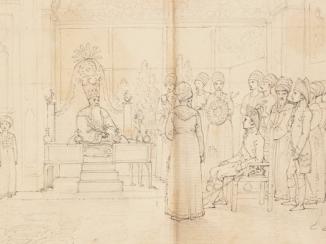Overview
Palestine before the 20th century
The oldest source on Palestine currently on the QDL is a nineteenth-century English translation of Ibn Hawqal’s Ṣūrat al-Arḍ (977 AD). This work includes depictions of rural and urban life in tenth-century Arab Palestine, attesting to the existence of a flourishing society, something routinely denied by its colonisers. It specifically mentions Ramla, Bayt al-Maqdis (Jerusalem), Bethlehem, Masjid Ibrahim [Hebron], Nablus, and Gaza as the ‘chief cities’ of Palestine.
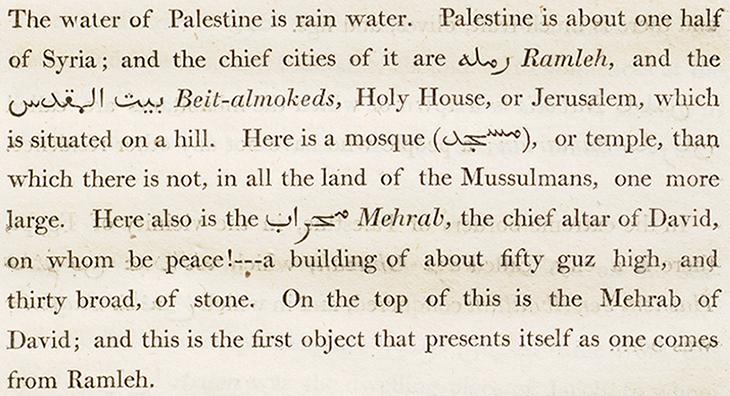
Other early mentions appear in a handful of sources on Ottoman Palestine and Napoleon Bonaparte’s campaign in the Levant A geographical area corresponding to the region around the eastern Mediterranean Sea. . This campaign and Bonaparte’s thwarted advance on India prompted Britain’s more interventionist policy in West Asia. Insecure in their occupation of India throughout the nineteenth century, British authorities increasingly interfered in countries considered strategically important for keeping rival powers at bay.
The First World War
During the War, Britain and France exercised what they self-servingly saw as their right to decide the destinies of other countries to the fullest. Following the 1917 campaign against the Ottoman Empire in the Levant A geographical area corresponding to the region around the eastern Mediterranean Sea. , Palestine was forced into the British imperial system as a Mandate; as such, following its military occupation it became subject to a British civil administration that was established in 1920 and approved by the League of Nations in 1922. Military reports in the India Office The department of the British Government to which the Government of India reported between 1858 and 1947. The successor to the Court of Directors. Records give clues about conditions and attitudes in Palestine at the time of the British occupation, describing economic conditions, shortages, and the earliest British attempts to establish an administration.
Further, diplomatic records from this period (notably the Curzon Papers: Mss Eur F111-F112) document the subsequent dismantlement of the Ottoman Empire, and the re-shaping of West Asia to suit British imperialist interests. These files record extensive debates over borders and zones of influence, as well as discussions of pipelines, railways, air routes, and naval bases. British officials’ lack of concern for the Palestinians themselves is starkly demonstrated in one Foreign Office memorandum discussing Palestine’s future, while explicitly denying Palestinians control over their own fate.
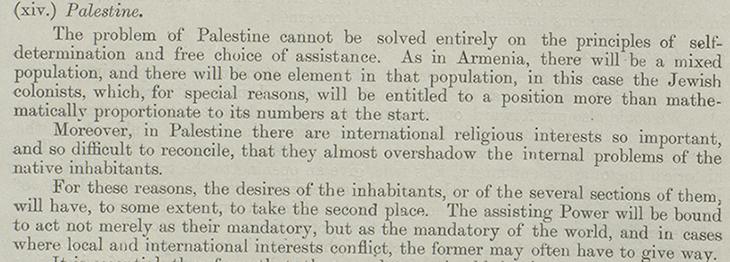
The 1930s: the Great Revolt
The highest concentration of material related to Palestine on the QDL dates from the 1930s. As colonisation and dispossession escalated, so too did the Palestinian resistance. British records from this period document the options discussed regarding Palestine’s future and contain maps showing various proposals for partition.
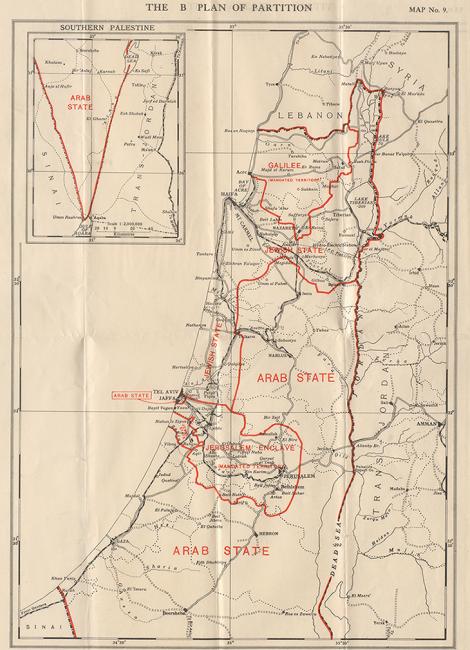
The most important event of these years was the Great Arab Revolt of 1936-39. British records from this time mention the ‘large scale’ smuggling of arms into Palestine via Aqaba (IOR/L/PS/12/4094, f. 10r). Elsewhere the India Office’s Military Department Library contains a report with maps and photographs of the Revolt.
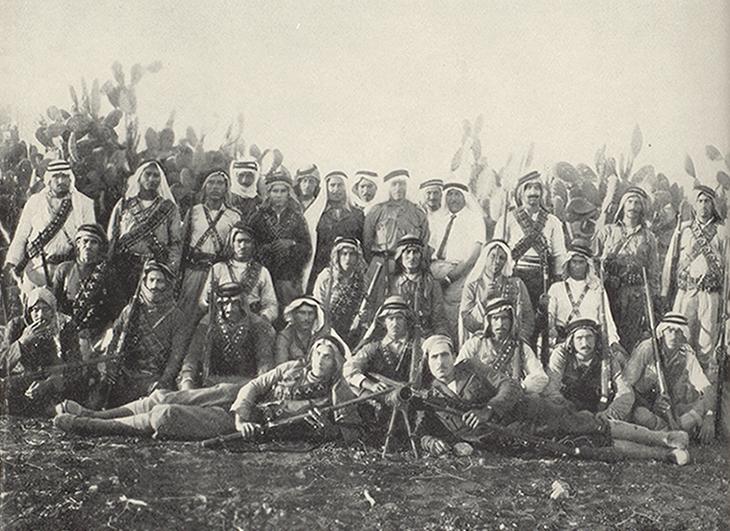
This report is prefaced with racist generalisations about Palestinians and ‘traditional Arab warfare’ (IOR/L/MIL/17/16/16, f. 8v). Its stated aim is to present the ‘lessons’ in counterinsurgency drawn from the massive and violent repression of Palestinians, in order to ‘contribute towards the shortening of similar operations and in the saving of [British] life and effort on another occasion’ (f. 8r). This is perhaps the founding document of what has been called the ‘centrifugal diffusion’ of counterinsurgency theory from Palestine – whereby ‘lessons’ from the oppression of Palestinians are exported to oppressive actors around the world, a phenomenon which continues to this day.
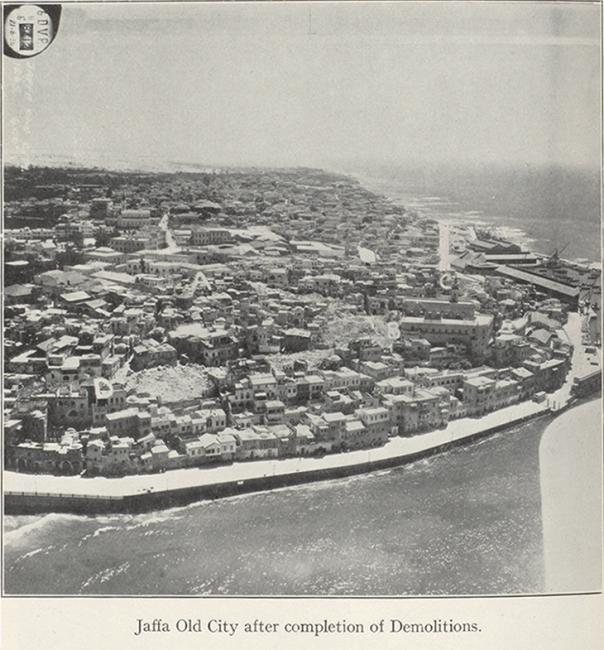
Information warfare
A recurring theme in sources from the 1920s onward is information warfare. There is propaganda material distributed in India and the Gulf by British authorities to control the narrative on Palestine, including content covering the 1929 Buraq Uprising and Arabic-language propaganda on partition plans. Elsewhere, there is a detailed description by the ‘Public Information Officer’ in Palestine of British propaganda operations in the country during the Second World War.
Other files reveal British authorities nervously monitoring Arabic-language propaganda produced by both fascist Italy and Nazi Germany. Further files concern so-called ‘anti-British propaganda’ circulated in Arabic newspapers, and attempts to stop this from reaching the Gulf. These files also contain examples of Palestinian journalism, particularly from the Jaffa-based newspaper Falastin, commenting on events in the Gulf, as well as anti-colonial Arab journalism from other countries; even in the 1930s, links were being drawn between Palestine and other struggles.
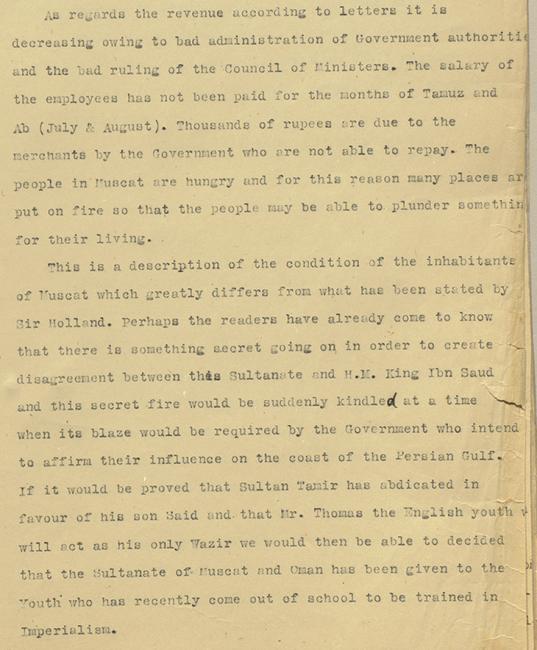
Public opinion in the Gulf
A second theme is the attitude of Gulf rulers and the public towards the Palestine issue, with British imperial records focusing on the rulers. In 1939, the British Secretary of State for Foreign Affairs appealed to Ibn Saʿud to use his ‘great influence in the Arab world’ to manufacture acceptance of British policy in Palestine (IOR/R/15/2/165, f. 201v). There were also parallel appeals from Palestinian bodies, asking Gulf rulers for assistance, which was not forthcoming. In 1937, Political Resident A senior ranking political representative (equivalent to a Consul General) from the diplomatic corps of the Government of India or one of its subordinate provincial governments, in charge of a Political Residency. T. C. Fowle reasoned that Gulf rulers were too militarily and financially dependent on Britain to dissent seriously on the Palestine issue.
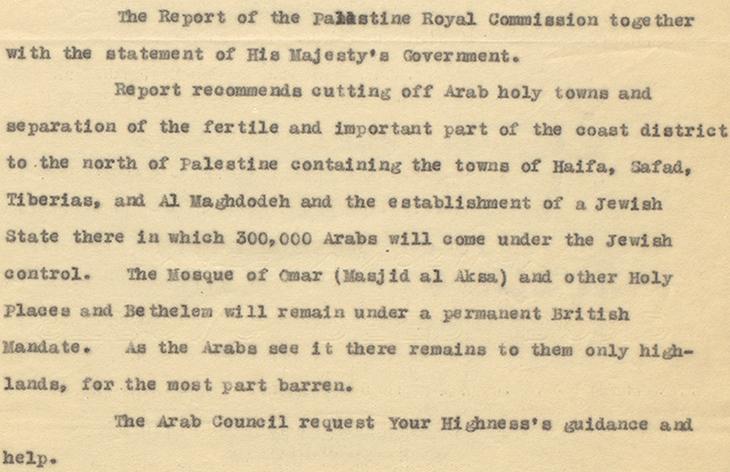
Early examples of solidarity between Palestine and the Gulf public are also discernible. There were fundraising efforts in Bahrain and the Trucial States A name used by Britain from the nineteenth century to 1971 to refer to the present-day United Arab Emirates. for Palestinian victims of the Revolt; British authorities tried to prevent these funds from reaching the resistance and to direct them instead towards pliant Palestinian authorities. Meanwhile, Ismail Rasassi, a Palestinian working in the Muscat government who would later become Governor of Mutrah, formed a ‘cell’ in Muscat opposing British policy in Palestine (IOR/R/15/6/379, f. 88r). Later, in 1941, the Political Agent A mid-ranking political representative (equivalent to a Consul) from the diplomatic corps of the Government of India or one of its subordinate provincial governments, in charge of a Political Agency. in Bahrain described a party of Kuwaiti schoolboys who ruffled British feathers during a visit to Bahrain by singing an ‘inflammatory’ song in support of Palestinians (IOR/R/15/2/588, f. 15r).
The Palestinian diaspora in the Gulf
After the 1948 Nakba, in which violence by Zionist armed groups drove hundreds of thousands of Palestinians from their homes, a third theme emerges in the records: refugees and the beginnings of the Palestinian diaspora in the Gulf. For example, Britain’s Political Agent A mid-ranking political representative (equivalent to a Consul) from the diplomatic corps of the Government of India or one of its subordinate provincial governments, in charge of a Political Agency. in Kuwait complained in 1949 about Palestinians ‘trickling’ into the country with passports from the Mandate or without any identity documents at all. Some of these refugees were employed by the Kuwait Oil Company, and the Political Agent A mid-ranking political representative (equivalent to a Consul) from the diplomatic corps of the Government of India or one of its subordinate provincial governments, in charge of a Political Agency. feared their influence would be ‘directed increasingly against’ Britain’s role in the country (IOR/R/15/5/319, f. 22r). Meanwhile, other records (IOR/R/15/6/380-382) show attempts by British authorities to find work for Palestinian refugees and students in Muscat – mostly as teachers, but also as doctors and agriculturalists. There is also mention of a short-lived proposal to resettle Palestinian cultivators in internally-colonised Dhofar. These documents provide early examples of the significant contribution made by Palestinians to the modern development of the Gulf states.
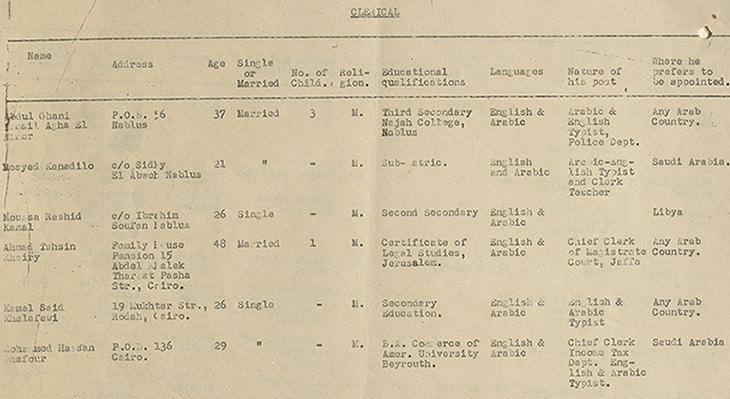

Conclusion: Palestinian voices
The records in this colonial archive are not neutral: most of these sources were written by British officials, usually with little interest in Palestinians other than keeping them quiet. Occasionally however, Palestinian voices do break through: they detail their experiences, express appeals for help, and convey their hopes for a secure and prosperous future. In these sources, Palestinians tell their own independent history.
























